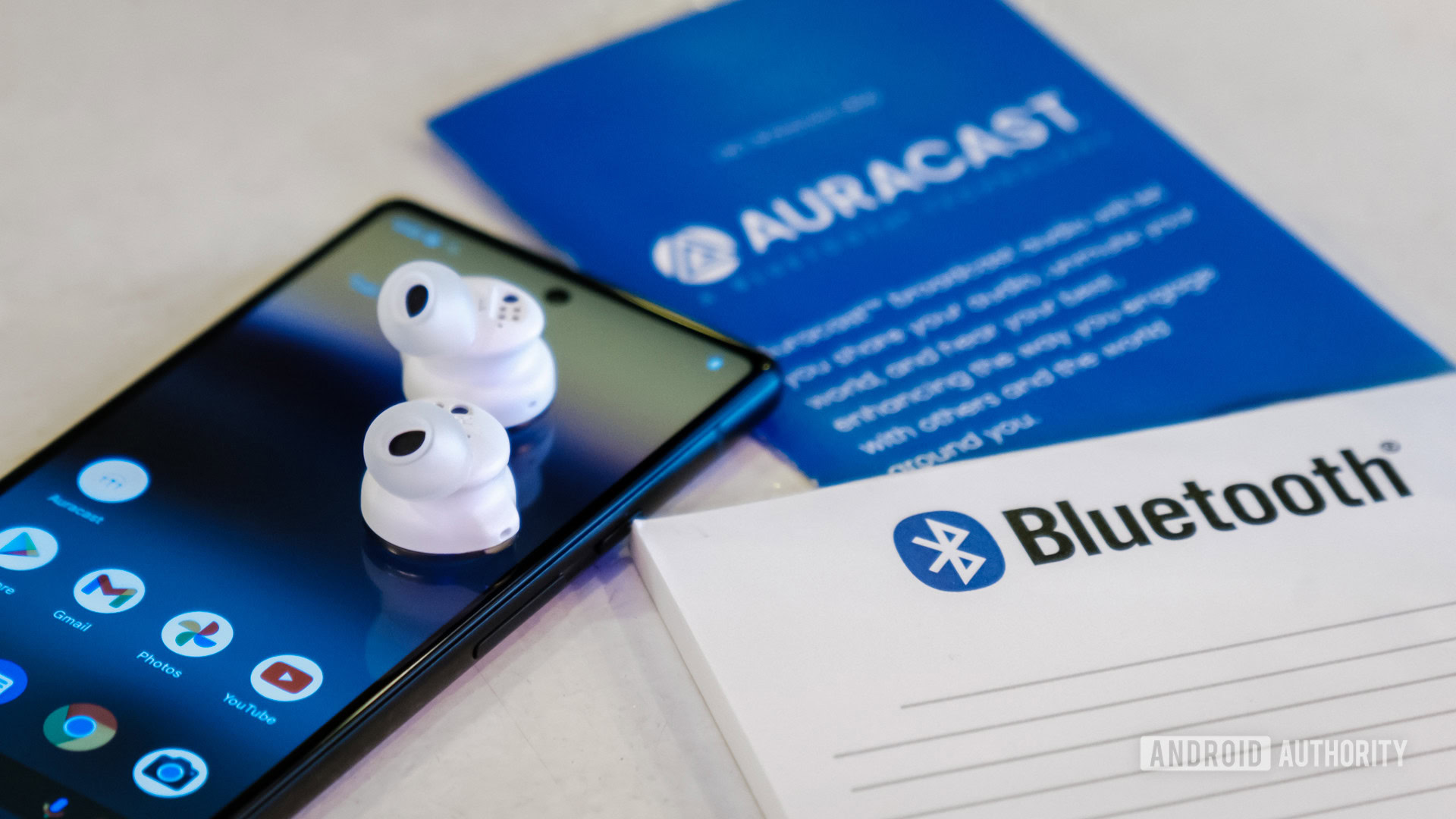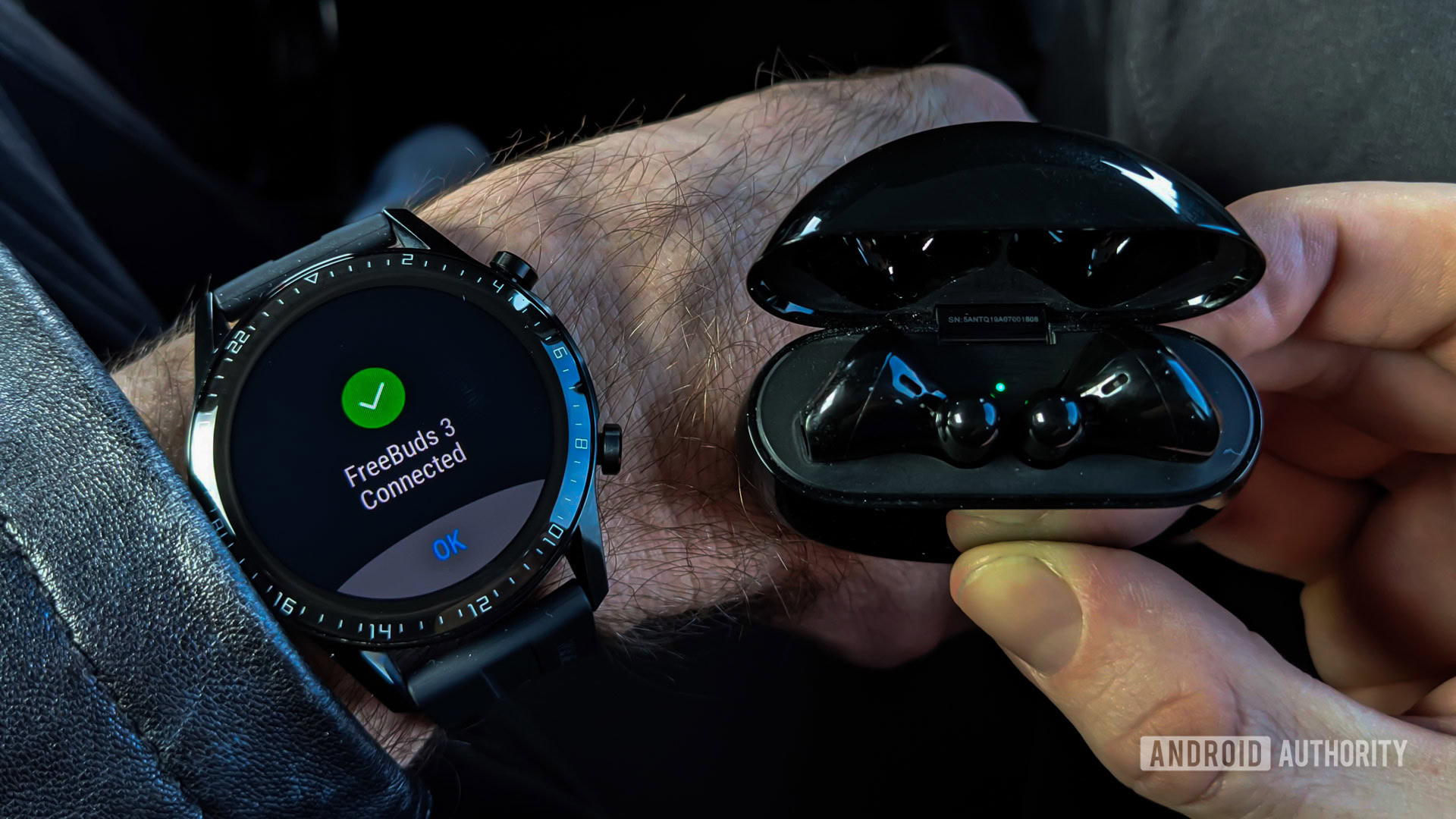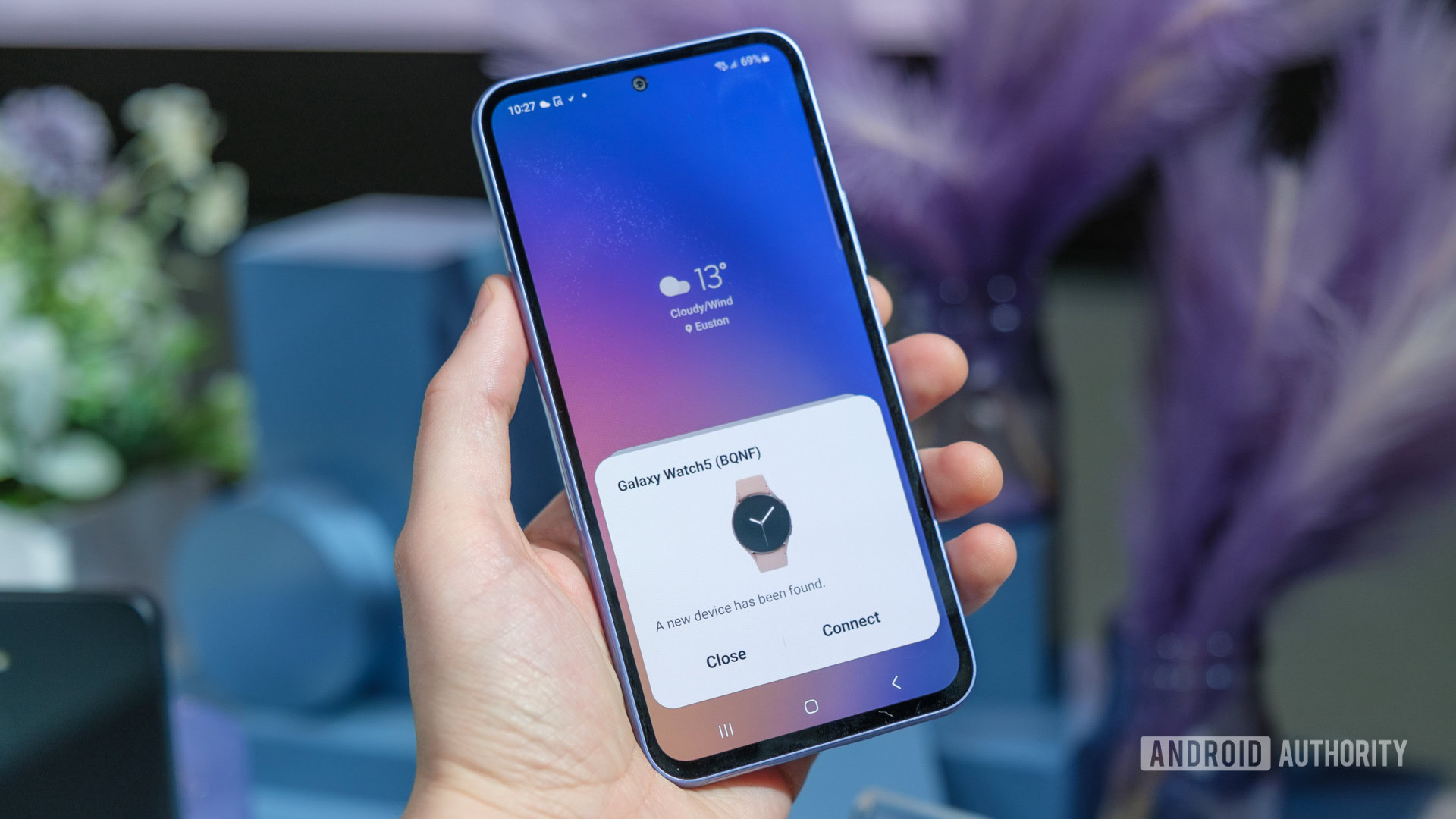Affiliate links on Android Authority may earn us a commission. Learn more.
What is Bluetooth Low Energy (LE)?
Published onApril 9, 2023

Bluetooth has become a valuable feature that many of us rely on every day. But most of the wireless devices you’re likely to own today go one step beyond the classic Bluetooth and you may have not even realized it. Over the past decade, Bluetooth Low Energy (LE) has become the de facto technology for everything from fitness trackers to next-gen audio products.
Bluetooth LE offers the same wireless connectivity we’ve come to expect from Bluetooth over the years, just at a fraction of the power consumption. And it’s not just limited to wearables either – we’re expecting the first Bluetooth LE Audio products to hit the market soon. So with that in mind, here’s everything you need to know about Bluetooth LE.
Bluetooth Low Energy (LE) is an off-shoot of the mainline Bluetooth technology, focused on lower power consumption. It’s mostly used in portable devices like smartwatches, but it also packs features like broadcasting that make it useful in smart home products. The latest Bluetooth Low Energy Audio standard also aims to bring power efficiency gains to wireless earbuds and headphones in the near future.
JUMP TO KEY SECTIONS
What is Bluetooth Low Energy (LE)?

Bluetooth Low Energy (LE) is a fork of the original Bluetooth standard, which is now commonly referred to as Bluetooth Classic. If you’ve ever read a product spec sheet and noticed version numbers like Bluetooth 5.2 or 4.0, you’re already familiar with the classic variety. Most smartphones these days support both, Bluetooth Classic and LE.
In 2010, the Bluetooth Special Interest Group (SIG) announced the Low Energy variant as an off-shoot of the Bluetooth 4.0 standard. As its name suggests, Bluetooth LE was designed as an alternative to the power-hungry and data-intensive wireless standard.
Bluetooth LE is a fork of the Bluetooth Classic standard, with the goal of low power consumption.
Bluetooth LE’s lower energy consumption is possible because it sends fewer packets of data at longer intervals of time. This means that your devices can stay in a deep sleep state for most of the time, and only come online to send new packets every few minutes. By contrast, Bluetooth Classic would involve continuous transmission.
With that in mind, it’s easy to see why Bluetooth LE works well for battery-powered smartwatches and fitness trackers. These devices also do not require constant communication. Any new data, like heart rate changes or notifications, can be pushed to or from your smartphone every now and then.
Bluetooth LE allows devices to send fewer packets and enter a deep sleep state for longer.
At this point, all major operating systems support Bluetooth Low Energy. Apple has embraced the technology since iOS 5, while Android first introduced support with 4.3 Jellybean. Bluetooth LE’s usefulness doesn’t end with portable consumer electronic devices either. It has also found use in industries like logistics, navigation, and sports. More on that in the next section.
What are the advantages and uses of Bluetooth LE?

Besides lower power consumption, Bluetooth LE also bundles a few usability features like simplified pairing and an advertising feature. Here’s a quick list of features and advantages of Bluetooth Low Energy:
- Quick pairing: Have you ever noticed that many modern wireless devices don’t require you to enter a password or PIN while pairing? That’s because Bluetooth LE offers a special pairing mode named “Just Works” that allows two devices to pair without any user input. It’s especially useful for devices that don’t have a screen or keyboard, but it’s also pretty convenient for audio products and wearables.
- Advertising mode: A Bluetooth LE device can broadcast, “advertise”, or announce itself publicly. This allows it to be discovered by other devices in the vicinity and initiate a connection. You may have seen this happen if you’ve ever used a product that supports Google’s Fast Pair.
- Positioning and tracking: A common use case for BLE is to track the location of objects through wireless beacons. These are essentially small, low-power devices that transmit a signal to nearby devices. BLE beacons, identified by their unique IDs, allow you to pinpoint the exact location of an item. These beacons are also often used to keep track of pets through connected collars. Likewise, the sports industry uses BLE in athlete equipment to measure performance and other metrics.
- Home automation: The low-power nature of BLE makes it a perfect fit in battery-powered sensors that track temperature, humidity, light level, and presence.
- Efficient audio streaming: Until recently, all wireless products had to use Bluetooth Classic for audio streaming. However, in 2022, the Bluetooth SIG introduced a new standard that finally brings audio support to BLE. In a nutshell, Bluetooth Low Energy Audio uses a new LC3 audio codec for improved audio quality at lower bitrates.
Bluetooth vs. Bluetooth LE: What’s the difference?

The original Bluetooth standard was introduced in 1999. At the time, it was designed for high-speed data transfers between devices. It excelled at this task, especially compared to existing technologies like infrared. Fast forward ten years, however, and the need for a low-power wireless communication protocol became clear. And that’s where Bluetooth LE came into the picture.
Bluetooth LE is inferior to Bluetooth Classic in two respects: range and data rate. Bluetooth LE’s low-power nature means it can only sustain a maximum range of around 30 meters. That’s less than a third of the mainline Bluetooth standard. Once again, though, wearables and most other BLE devices don’t operate over long distances. It’s also much better than competing protocols like NFC.
Here’s a table showcasing the differences between Bluetooth vs Bluetooth LE:
| Bluetooth | Bluetooth Low Energy | |
|---|---|---|
Data rate | Bluetooth 1 to 3 Mbps | Bluetooth Low Energy 125 Kbps to 2 Mbps |
Range | Bluetooth Over 100 meters | Bluetooth Low Energy Under 100 meters |
Pairing | Bluetooth Traditional, may require PIN or passkey | Bluetooth Low Energy Simplified pairing process |
Connection | Bluetooth Continuous, reliable connection | Bluetooth Low Energy Intermittent connection, best used for short bursts |
Power consumption | Bluetooth High (Up to 1W) | Bluetooth Low Energy Low (0.01W to 0.1W) |
FAQs
Yes, Bluetooth Low Energy is a part of the Bluetooth 4.2 standard. However, it uses a different hardware implementation than classic Bluetooth and may not be supported on some devices.
Yes, Bluetooth 5.0 also brings improvements to the Low Energy mode with the possibility of longer range and faster data rates.
Yes, virtually all Android devices since 2014 include support for Bluetooth Low Energy.
No, Bluetooth Low Energy cannot stream video since the technology is used to transmit data in short bursts. For continuous data streaming, you’ll need to use Bluetooth Classic. Even then, most devices use a different wireless technology for video streaming, like Wi-Fi.
Yes, both devices need to support Bluetooth Low Energy in order to establish a connection. However, most modern devices include support for both Bluetooth Classic and LE.